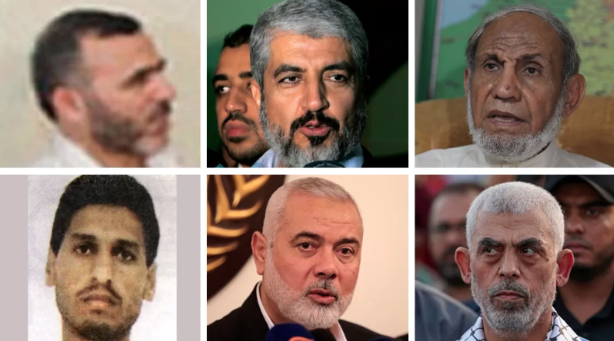Israel
Hamas’ Role in the Israel War: Gaza’s Perspective

Amidst the dust-laden echoes of the Israel war, in Gaza’s constricted passageways where the air is thick with the weight of expectation and despair, Hamas stands—a monolith in the eyes of Palestinians and a specter to Israelis. The year 2007 saw Hamas’ rise to governance, embedding itself as the sinew and bone of Gaza’s struggle for autonomy, articulating a future torn from the chapters of Israeli dominion. Yet, within these tightly woven tales of resistance and dogma, the dissonance of Middle Eastern geopolitics is stark, a tapestry frayed by the unrelenting hands of war. As we delve into this account, we shall navigate the labyrinthine realities of a land where the term ‘survival’ is imbued with the blood of history, examining the formidable narrative of Hamas within the perennial theatre of the Israel-Palestinian conflict.
Hamas’ roots stretch deep into the soil of historical discord, drawing nutrients from decades of Israeli-Palestinian tensions. The very fabric of its foundation is woven with the threads of past wars, ideological battles, and the relentless pursuit of statehood that has defined the Palestinian cause. Its governance in Gaza is the latest chapter in this storied conflict, one where the drumbeats of war reverberate with the echoes of past confrontations and the whispers of a contested future.
Beneath the watchful gaze of Hamas’ governance, life in Gaza weaves a tapestry of endurance amidst adversity. Here, a fisherman gazes longingly at the border’s naval blockade, each wave a barrier to prosperity. A mother, cradling her children, transforms her very body into a shield against the relentless fury of rockets. These are the threads of existence in a land punctuated by the piercing flight of rockets headed towards Israel, and the deep scars left by the thunderous responses that shake the streets of Gaza.
In these relentless exchanges, memories are seared into the minds of those who live beneath the trajectories of these projectiles. The landscape itself bears witness to this relentless back-and-forth — buildings pockmarked by shrapnel, playgrounds emptied by fear, and markets that buzz with the talk of ceasefires and escalations.
The resilience of Gazans is a testimony to the human spirit’s tenacity. Each day is a masterclass in the art of survival, as people adapt to the rhythm of uncertainty — finding solace in community, solace in faith, and hope in the thought that each sunrise brings them one day closer to a semblance of normalcy. Through it all, they persevere, crafting a life of tenacious hope from the shadow of despair.
Hamas’ story is not merely a local affair but is emblematic of broader power struggles that crisscross the region. The backing of Iran, manifesting in financial, military, and strategic support, is a testament to the international dimension of this localized struggle. This patronage is not without strings and is indicative of the larger chess game being played across the Middle East—a game where Gaza’s sandy shores become the front lines.
The designation of Hamas as a terrorist organization by countries such as Israel, the United States, the European Union, and the UK underscores the prevailing global narrative against the group. This label, carrying with it significant political and legal implications, frames the group within a specific context of global security concerns. Yet, within the contested borders of morality and legality, the stories of those who live in the crossfire compel a critical gaze beyond the black-and-white portrayal of friend and foe.
Gaza, with its crumbling facades and resilient echoes of life, remains a testament to the tenacity of its people and the pervasive shadow of Hamas’ governance. The sounds of children playing football amidst the ruins juxtapose against the silence of a community in mourning—a duality that is ever-present in this land of contrasts. The very air carries the salt of the Mediterranean and the acrid scent of gunpowder, a constant reminder of the volatility that defines life here.
The enigma that is Hamas, with its blend of governance, militancy, and ideological fervor, continues to shape Gaza’s destiny. As the world grapples with the implications of its actions and the legitimacy of its rule, the everyday realities of Gazans persist under the watch of drones and the scrutiny of international debate. The future, as always, remains uncertain, teetering between the possibility of peace and the specter of further conflict. What remains clear is that the path to understanding this land and its people is as complex as the history that has shaped it. The deeper question lingers—can there be a resolution where the needs for security, sovereignty, and dignity coexist, or is the region destined to remain in the throes of an endless struggle for power?
Hamas gunmen launched an unprecedented assault on Israel from the Gaza Strip on 7 October, killing more than 1,400 people and taking more than 200 hostages.
Since then, Israel has been carrying out strikes on Gaza in response, killing more than 10,000 people, according to the Hamas-run health ministry.
The Israel Defense Forces (IDF) has bombarded Gaza from the air and sent ground forces into the territory.
Israel’s Prime Minister, Benjamin Netanyahu, has said there is a “clear goal of destroying Hamas’s military and governing capabilities”, as well as freeing hostages. He has refused calls for a ceasefire.













You must be logged in to post a comment Login